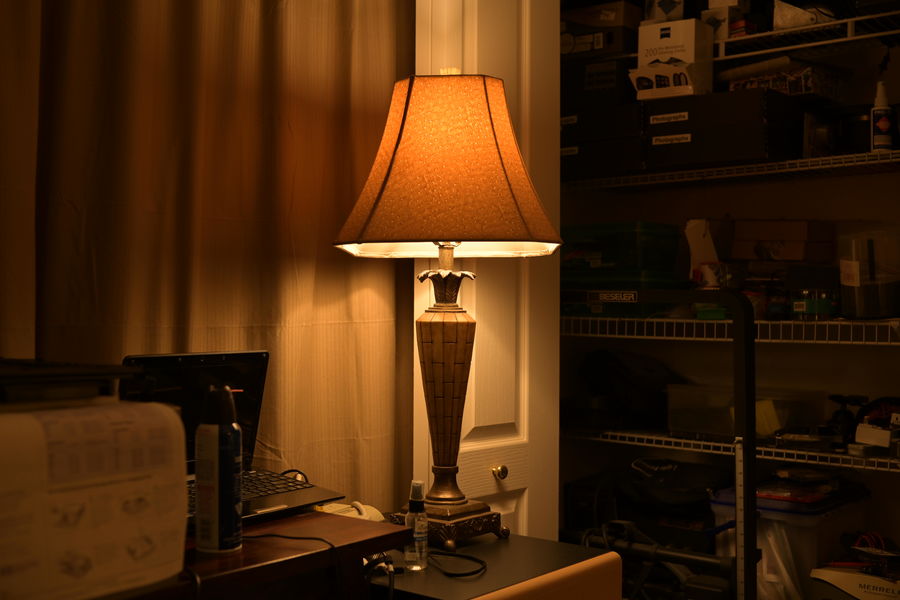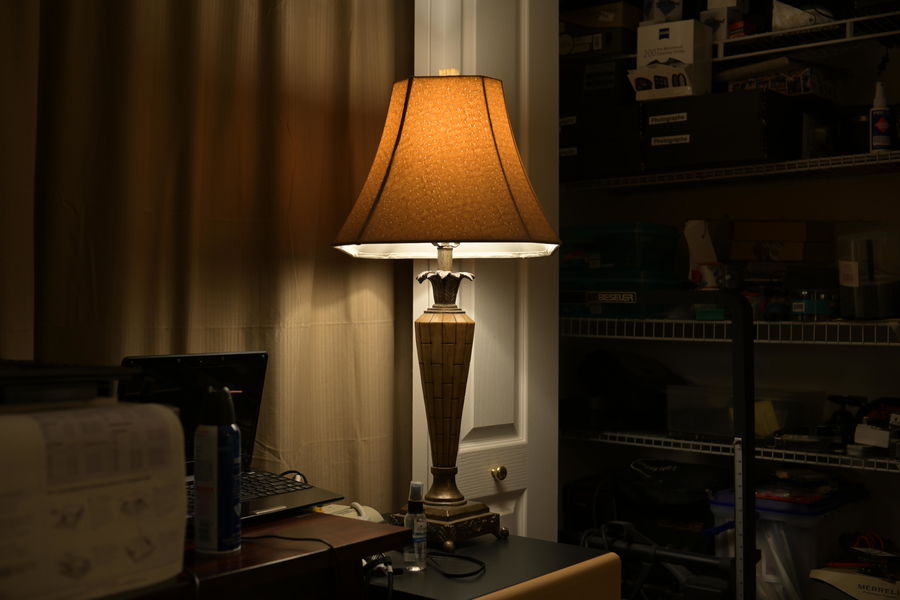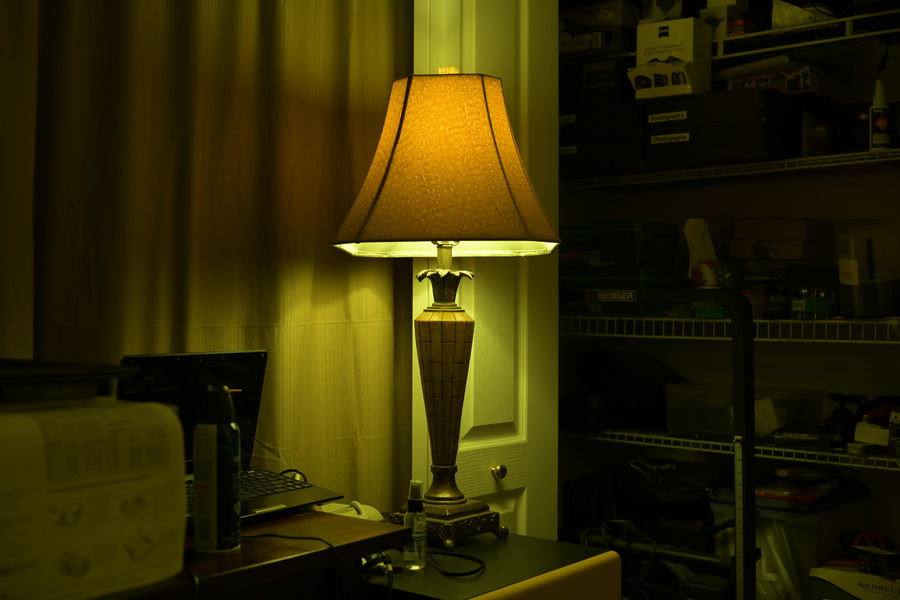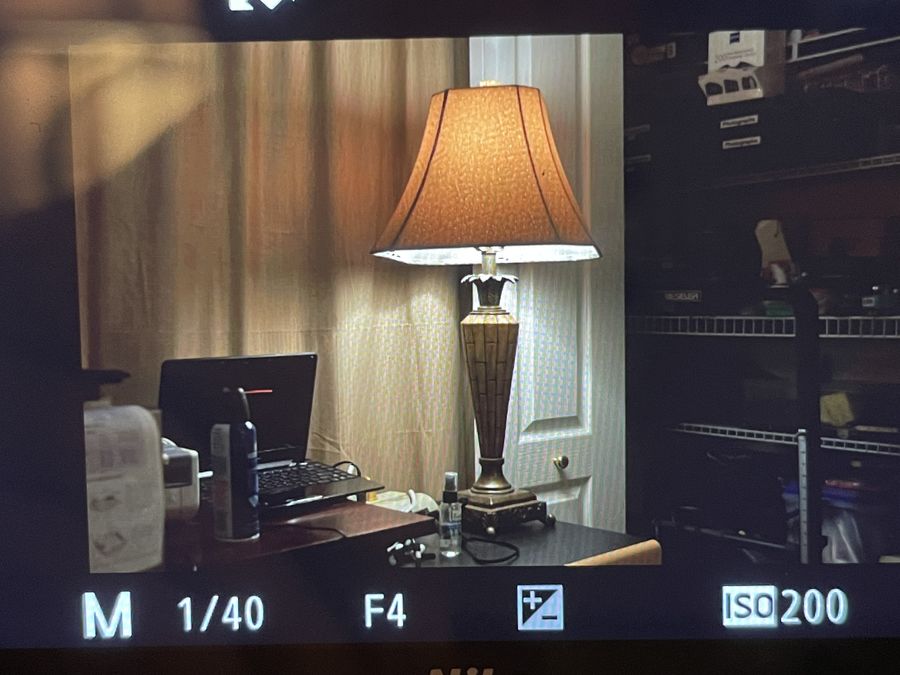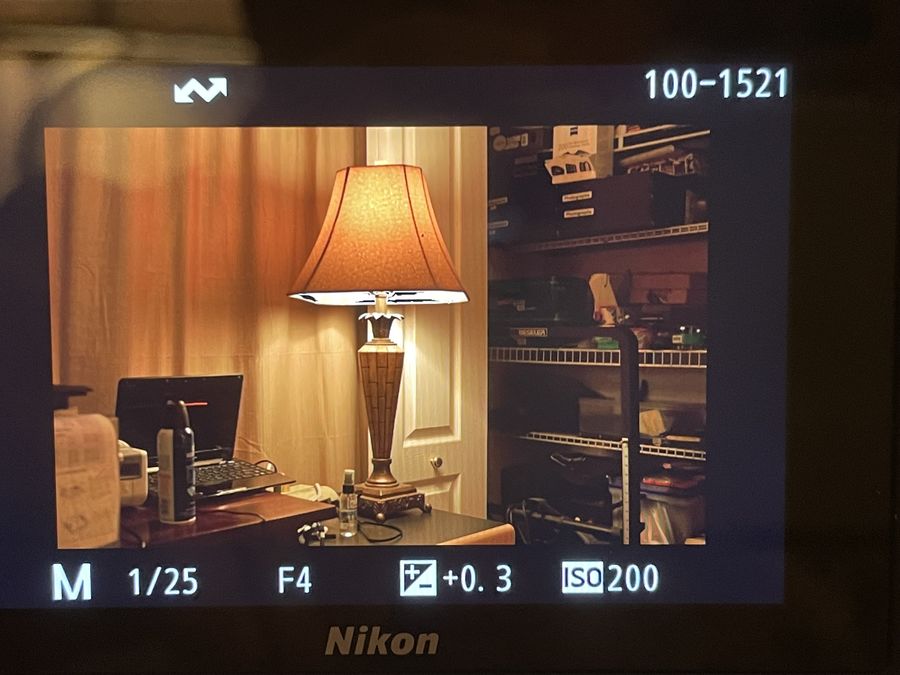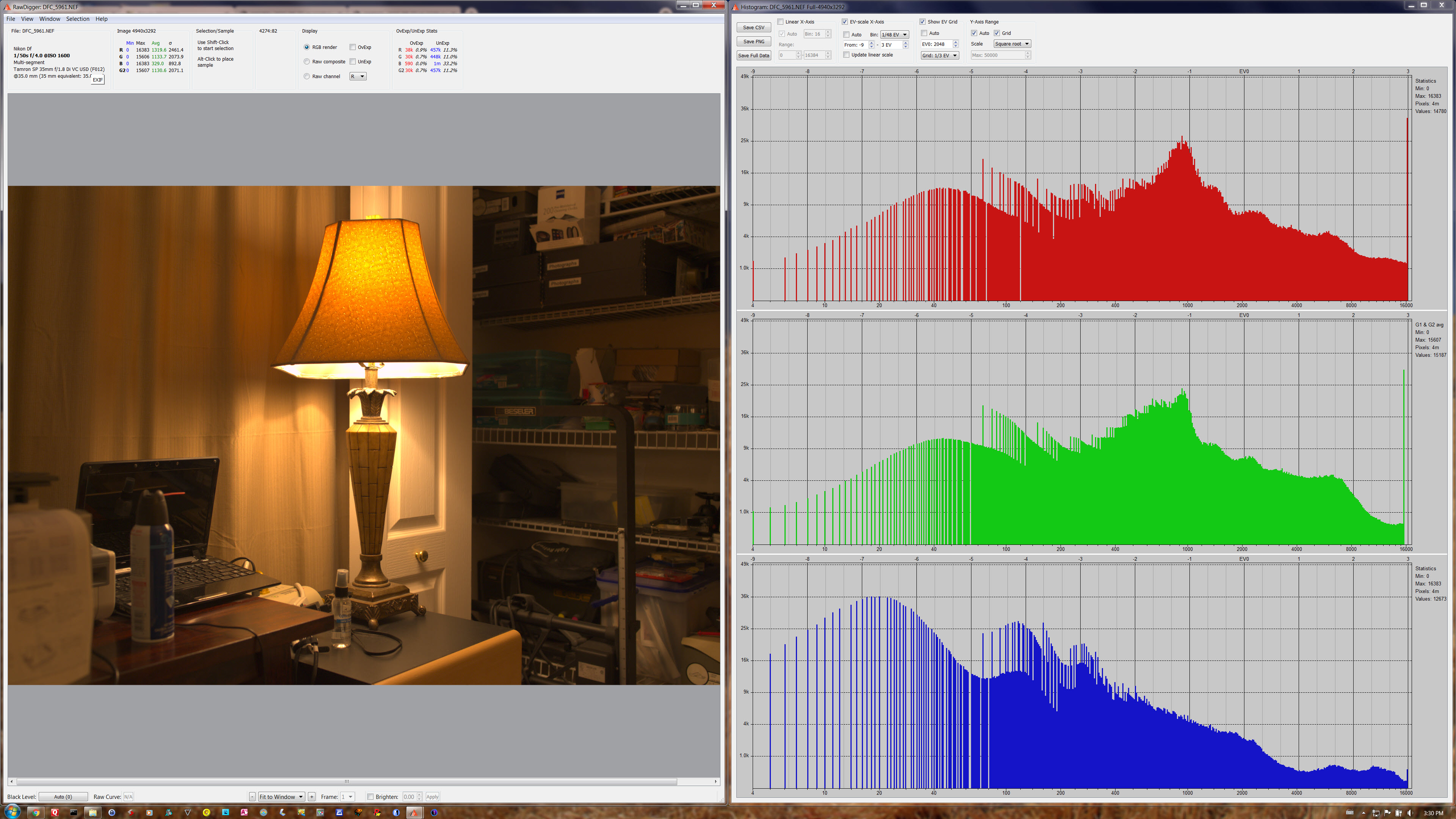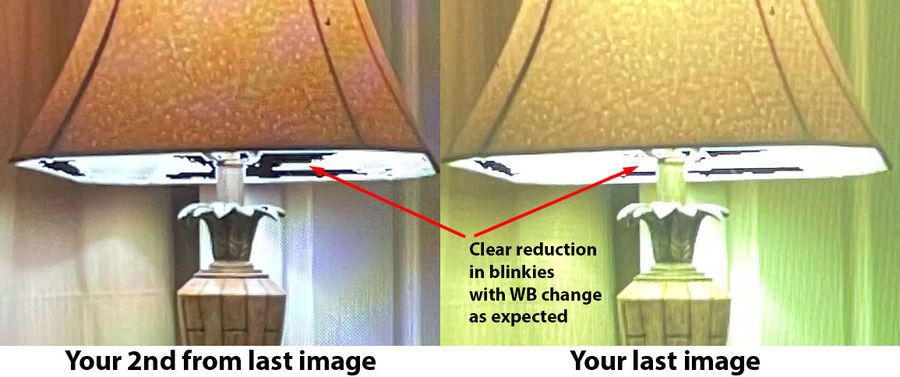Does White Balance (WB) affect the raw data?
Aug 28, 2021 05:09:43 #
Ysarex wrote:
OK, waiting for the documentation then for this blinkies overlay that's embedded in JPEGs. The fact that you can't zoom a Nikon display and still see the blinkies is no proof such nonsense exists. The fact that you suggested that and now remark that since another camera implements that feature, it doesn't prove otherwise makes all that you have to say questionable. ...
Trying to explain things to you has been casting pearls before swine.
But there are others watching this discussion - 1866 views at this point. Some may consider it entertainment but others are learning from it.
If Nikon and Sony don't digitally zoom the blinkies that show in the thumbnail, that's a deliberate choice. Zooming in live view or in the thumbnail is for checking the focus, not the exposure. They are creating the zoomed view from the full JPEG, not the thumbnail that has the blinkies embedded in it. There is no benefit to zooming in on the blinkies.
If you look closely at the highlight warnings for your SL you will see that the zoomed in version is only approximately similar to the shape of the full image version. It's not very sharp either. That suggests that Leica is not very careful with their display.
In fact, the blinkies provide no benefit at all to someone who intends to develop from raw on their computer unless they know the relationship between the start of the blinkies and the levels recorded in the raw file. I have measured that relationship with the help of RawDigger, you have not.
Aug 28, 2021 07:26:07 #
Here is one more piece of evidence and it's good news for Z7 users, probably for anyone who uses Highlight Weighted Metering.
I took multiple exposures of a scene that had a wide DR. I used three different WB settings (Daylight, Incandescent/Tungsten and UniWB).
Aperture priority and Highlight Weighted Metering made it easy to do the test. Of course, I could have used some other means of discovering the threshold exposure.
At all three WB settings, there were no blinkies at EC+0 and they began to show up at EC+0.3. The meter used the same shutter speed (1/40s no blinkies, 1/30 blinkies) for all three WB settings so it's clearly not influenced by the WB. The raw histograms were also unaffected by WB as we have already seen.
I will show only one example of the RawDigger information where I used Incandescent WB.

The blinkies showed up along the inside bottom edge of the lampshade, the area outlined by the gray selection patch. In the selected area fewer than 400 pixels are blown out out of 45 MP in the overall image.
This is a simple test that anyone can perform with the help of RawDigger - at least anyone with an open mind who is not in denial and has an ax to grind.
I took multiple exposures of a scene that had a wide DR. I used three different WB settings (Daylight, Incandescent/Tungsten and UniWB).
Aperture priority and Highlight Weighted Metering made it easy to do the test. Of course, I could have used some other means of discovering the threshold exposure.
At all three WB settings, there were no blinkies at EC+0 and they began to show up at EC+0.3. The meter used the same shutter speed (1/40s no blinkies, 1/30 blinkies) for all three WB settings so it's clearly not influenced by the WB. The raw histograms were also unaffected by WB as we have already seen.
I will show only one example of the RawDigger information where I used Incandescent WB.

The blinkies showed up along the inside bottom edge of the lampshade, the area outlined by the gray selection patch. In the selected area fewer than 400 pixels are blown out out of 45 MP in the overall image.
This is a simple test that anyone can perform with the help of RawDigger - at least anyone with an open mind who is not in denial and has an ax to grind.
Aug 28, 2021 09:28:32 #
Ysarex
Loc: St. Louis
selmslie wrote:
Trying to explain things to you has been casting p... (show quote)
No documentation here. You remain unable to explain how the blinkies displayed on a camera LCD while chimping a JPEG can be based on raw data when no raw file was saved, the camera was turned off and back on and only the existing JPEG on the card is available while being viewed on the camera. The blinkies as such are based on the JPEG data not raw data and you remain proven wrong.
Aug 28, 2021 09:43:22 #
Ysarex
Loc: St. Louis
selmslie wrote:
At all three WB settings, there were no blinkies at EC+0 and they began to show up at EC+0.3. The meter used the same shutter speed (1/40s no blinkies, 1/30 blinkies) for all three WB settings so it's clearly not influenced by the WB.
No one has suggested otherwise.
selmslie wrote:
The raw histograms were also unaffected by WB as we have already seen.
No one has suggested otherwise.
The blinkies however are influenced by white balance and that makes sense as they are based on the JPEG data or the simulated JPEG in live-view video output (now proven).
Steve Perry clearly demonstrates this with his Nikon and does so by showing the blinkies on the camera.
On my Nikon Z7 I get the same result Steve does and the blinkies are clearly affected by the WB setting. I have shown the actual blinkies behaving as such on the camera: https://www.uglyhedgehog.com/t-708977-4.html#12505035
I have also shown the same behavior on my Fuji XT-4. My Leica and Canon behave the same way.
You haven't shown us any blinkies on any cameras. You have been repeatedly asked for documentation and reference sources and provided nothing.
You remain proven wrong that the blinkies are based on raw data.
You remain proven wrong that the blinkies are not influenced by the WB setting.
Aug 28, 2021 10:29:26 #
Ysarex wrote:
... The blinkies however are influenced by white balance and that makes sense as they are based on the JPEG data or the simulated JPEG in live-view video output (now proven).
Steve Perry clearly demonstrates this with his Nikon and does so by showing the blinkies on the camera.
On my Nikon Z7 I get the same result Steve does and the blinkies are clearly affected by the WB setting. ...
Steve Perry clearly demonstrates this with his Nikon and does so by showing the blinkies on the camera.
On my Nikon Z7 I get the same result Steve does and the blinkies are clearly affected by the WB setting. ...
Then it looks like neither of you know how to test this.
I just showed how to test it. My directions are clear. Anyone with a Z7 (and others) can easily replicate my test.
My results are consistent. If you use the same shutter speeds with different WB settings the blinkies start at the same threshold.
Here is the UniWB version at 1/30s. The blinkies are just beginning.

And with Daylight WB.

Examine the positions of the raw histograms. They are virtually identical. The number of blown pixels ranges between 400 and 600 out of 45MP due to tiny variations in actual shutter speed - 1/30s +/- error.
If you still can't see it then you are in denial. There is nothing more I can say.
Aug 28, 2021 10:45:48 #
Ysarex
Loc: St. Louis
selmslie wrote:
Then it looks like neither of you know how to test this.
I just showed how to test it. My directions are clear. Anyone with a Z7 (and others) can easily replicate my test.
My results are consistent. If you use the same shutter speeds with different WB settings the blinkies start at the same threshold.
I just showed how to test it. My directions are clear. Anyone with a Z7 (and others) can easily replicate my test.
My results are consistent. If you use the same shutter speeds with different WB settings the blinkies start at the same threshold.
I don't see any blinkies. You've never shown any blinkies in this thread. Here's blinkies being shown: https://www.uglyhedgehog.com/t-708977-4.html#12505035
That's a Nikon Z7. Clearly you're methodology is wrong. The same happens with a Fuji XT-2: Here's blinkies shown on the camera: https://www.uglyhedgehog.com/t-708977-2.html#12502292
Precisely what do Steve and I not understand about testing that? Camera on a tripod with an unmoving subject. Unchanging scene illumination and same exposure manually set. The only two things that change are the WB and the blinkies in response.
You remain proven wrong that the blinkies are based on raw data.
You remain proven wrong that the blinkies are not influenced by the WB setting.
Aug 28, 2021 12:48:59 #
Ysarex wrote:
I don't see any blinkies. You've never shown any blinkies in this thread. ...
You would see them on your own camera if you had followed my instructions.
At 1/30s they are very small so I took another shot at 25s:

Ysarex wrote:
That's a Nikon Z7. Clearly you're methodology is wrong.
Clearly wrong? How would you do it?
One image has no blinkies the next one 0.3 stops brighter does. The blinkies threshold was crossed somewhere in between. What's wrong with that logic?
Below are the JPEGs SOOC from the previous test at 1/30s where the blinkies just started and where there were between 400 and 600 blown raw pixels according to RawDigger.
Feel free to download them and look at their JPEG histograms in any editor. They are all quite different.
Now try and explain how Nikon came up with the same blinkies threshold for all three - between 1/40s and 1/30s. Pure coincidence? Extremely lucky? A very complicated calculation based on the weighted JPEG luminance values? How did they weight them?
The raw values don't change when the WB is changed so why not just calculate the threshold from the raw values? Is that too simple for you?
Occam's razor is commonly understood to mean that where one explanation is simple and another is complex, the simpler solution wins. My approach is simpler than yours.
You lose.
Aug 28, 2021 13:04:19 #
Ysarex
Loc: St. Louis
selmslie wrote:
Clearly wrong? How would you do it?
Below the image you showed of the back of the camera and blinkies I'd show a second image of the back of the camera with the same subject, same exposure, WB changed to UniWB, and the exact same blinkies flashing.
I don't see that you've done that.
My test would show no or less blinkies with the changed WB. My test in fact did: https://www.uglyhedgehog.com/t-708977-4.html#12505035
And since you have not shown contradictory evidence:
You remain proven wrong that the blinkies are based on raw data.
You remain proven wrong that the blinkies are not influenced by the WB setting.
Aug 28, 2021 13:31:17 #
Ysarex wrote:
Below the image you showed of the back of the camera and blinkies I'd show a second image of the back of the camera with the same subject, same exposure, WB changed to UniWB, and the exact same blinkies flashing. ...
Once more you are implying that I am being dishonest.
You have been rude and insulting throughout this thread and you haven't made any effort to try and understand the issues.
You have no clue how any camera can arrive at a blinkies threshold based on JPEG brightness values.
I will be happy to provide more information to anyone else but if you can't meet me half way I am done with you.
Aug 28, 2021 13:59:42 #
Ysarex
Loc: St. Louis
selmslie wrote:
Once more you are implying that I am being dishonest.
I'm implying no such thing in my last post.
selmslie wrote:
You have been rude and insulting throughout this thread
Not even remotely close compared to you.
selmslie wrote:
and you haven't made any effort to try and understand the issues.
You have no clue how any camera can arrive at a blinkies threshold based on JPEG brightness values.
You have no clue how any camera can arrive at a blinkies threshold based on JPEG brightness values.
That's by the way somewhat off topic. Your erroneous claim is that the blinkies are not influenced by changes in WB. I've demonstrated that they are. I've given you a reference to a respected authority (Steve Perry) who has likewise demonstrated the same.
You remain proven wrong that the blinkies are based on raw data.
You remain proven wrong that the blinkies are not influenced by the WB setting.
Aug 28, 2021 14:56:44 #
Ysarex wrote:
... Your erroneous claim is that the blinkies are not influenced by changes in WB. I've demonstrated that they are. ...
The blinkies were too small to see in the iPhone image at 1/30s. So I ran the test at 1/40s (no blinkies) and 1/25s (blinkies flashing).
This narrows the threshold down to between 1/40s and 1/25s. But I know from my earlier testing that it's really between 1/30s and 1/40s for this scene.
As you can imagine, to catch the blinkies when they flash on is a matter of timing. It's a PITA.
Since the exposure is set to Manual you can overlook the EC+0.3 in the 1/25s set. It was left over from another test.
If you do the test as I did, on a tripod, you should be able to come up with the same result. It proves that WB does not affect the blinkies.
To prove that it does you will need to run the same test that I just did.
So show me your results. You will need to post six images - two shutter speeds within 0.3 or 0.7 stop of each other (with and without blinkies) each at the same three WB settings. Is that to complicated for you?
Don't come back until you do.
Aug 28, 2021 15:24:15 #
Aug 28, 2021 15:25:15 #
Aug 28, 2021 15:31:36 #
Ysarex
Loc: St. Louis
selmslie wrote:
The blinkies were too small to see in the iPhone image at 1/30s. So I ran the test at 1/40s (no blinkies) and 1/25s (blinkies flashing).
This narrows the threshold down to between 1/40s and 1/25s. But I know from my earlier testing that it's really between 1/30s and 1/40s for this scene.
As you can imagine, to catch the blinkies when they flash on is a matter of timing. It's a PITA.
This narrows the threshold down to between 1/40s and 1/25s. But I know from my earlier testing that it's really between 1/30s and 1/40s for this scene.
As you can imagine, to catch the blinkies when they flash on is a matter of timing. It's a PITA.
Yes it is.
selmslie wrote:
Since the exposure is set to Manual you can overlook the EC+0.3 in the 1/25s set. It was left over from another test.
If you do the test as I did, on a tripod,
If you do the test as I did, on a tripod,
I previously did.
selmslie wrote:
you should be able to come up with the same result.
I did.
selmslie wrote:
It proves that WB does not affect the blinkies.
It most certainly does not. It proves exactly the opposite. I downloaded your last two images and placed the critical area side by side -- see illustration below. With the WB change there is a clear reduction in the area covered by the blinkies. It's the expected change in response to that WB change. If WB doesn't affect the blinkies then we should see the same area covered by the blinkies in both photos -- certainly not the case. You've proven yourself wrong --good job! Of course four months ago you were originally correct in this post: https://www.uglyhedgehog.com/t-692202-3.html#12145988 if that's any consolation.
You remain proven wrong that the blinkies are based on raw data.
You remain proven wrong that the blinkies are not influenced by the WB setting.
Aug 28, 2021 15:39:01 #
Ysarex wrote:
It most certainly does not. It proves exactly the ... (show quote)
Where is your evidence - two images at three WB settings? Can’t do it?
If you want to reply, then register here. Registration is free and your account is created instantly, so you can post right away.

